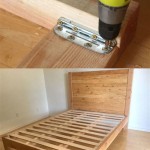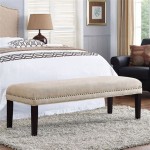Can Adjustable Beds Cause Lower Back Pain?
Adjustable beds have gained popularity in recent years, touted for their potential to enhance comfort and alleviate various health issues. While many individuals find these beds beneficial, concerns have emerged regarding their potential to contribute to or exacerbate lower back pain. This article explores the relationship between adjustable beds and lower back pain, examining the factors that might lead to discomfort and providing insights into making informed decisions regarding adjustable bed usage.
The premise of an adjustable bed lies in its ability to modify the sleeping surface's angle, allowing for customized positioning. This adjustability is achieved through a motorized base that can elevate the head, feet, or both. Proponents of adjustable beds suggest that these configurations can improve circulation, reduce pressure points, and alleviate symptoms associated with conditions like sleep apnea, acid reflux, and edema. However, the specific mechanics of these beds and individual variations in spinal health can influence their impact on lower back pain.
It's crucial to understand that adjustable beds, in themselves, are not inherently harmful. The potential for lower back pain arises from improper usage, inappropriate mattress selection, and pre-existing spinal conditions. To properly evaluate the relationship, a thorough examination of contributing factors is necessary.
Improper Positioning and Spinal Alignment
One of the primary ways an adjustable bed might contribute to lower back pain is through incorrect positioning. While the adjustable nature is intended to provide personalized comfort, users must be mindful of maintaining proper spinal alignment. Over-flexion or over-extension of the spine, particularly in the lumbar region, can strain muscles, ligaments, and intervertebral discs. For instance, excessively elevating the head without adequate support for the lower back can create a "slumped" posture, placing undue pressure on the lumbar spine.
Similarly, raising the feet too high without considering the natural curvature of the spine can alter the pelvic tilt and affect the overall alignment. Individuals should experiment with different angles and positions to find a setting that supports the natural curves of the spine. This often involves a slight elevation of the head and knees, maintaining a neutral spinal position. Consulting with a physical therapist or chiropractor can provide personalized guidance on optimal sleep positions for individuals with existing back pain or spinal conditions. A trial and error method should be performed to find the perfect comfortable position to alleviate the back pain.
It's imperative to listen to the body's signals and adjust the bed accordingly. If any discomfort or pain is experienced, the position should be modified until a more comfortable and supportive setting is found. Paying attention to these signals along with the help of a professional can help reduce back pain.
Inadequate Mattress Support
The mattress used in conjunction with an adjustable bed frame plays a significant role in determining its impact on lower back pain. A mattress that lacks adequate support can exacerbate existing spinal issues or even create new ones. When the mattress is too soft, the spine may sink into it, leading to spinal misalignment and muscle strain. Conversely, a mattress that is too firm may not conform to the body's natural curves, resulting in pressure points and discomfort.
For adjustable beds, a mattress that is flexible and compatible with the adjustable base is essential. Memory foam and latex mattresses are often recommended because they conform to the body while providing adequate support and flexibility. Innerspring mattresses may not be as suitable, as they can be less flexible and may not move seamlessly with the adjustable base.
The ideal mattress firmness is subjective and depends on individual preferences and body weight. However, individuals with lower back pain generally benefit from a medium-firm mattress that provides a balance of support and cushioning. It's recommended to test different mattresses on an adjustable bed frame before making a purchase to ensure compatibility and comfort. Consider the density of the mattress to make sure it will provide the right amount of support without being too firm or too soft.
Pre-Existing Spinal Conditions and Individual Sensitivity
Individuals with pre-existing spinal conditions, such as scoliosis, herniated discs, or spinal stenosis, may be more susceptible to experiencing lower back pain when using an adjustable bed, especially if proper considerations are not taken. These conditions can alter the spine's natural alignment and make it more sensitive to positional changes. The changes brought on by these conditions need to be considered when using an adjustable bed.
In such cases, consulting with a healthcare professional before using an adjustable bed is crucial. A doctor or physical therapist can assess the individual's specific condition and provide recommendations on appropriate sleeping positions and mattress types. They can also advise on whether an adjustable bed is suitable for the individual's specific needs.
Furthermore, individuals with certain medical conditions, such as arthritis or fibromyalgia, may experience increased pain or stiffness when using an adjustable bed, particularly if the mattress is not adequately supportive. It's important to consider these individual sensitivities and consult with healthcare providers to determine the best course of action. Taking the time to learn about how the individual conditions can be affected by the use of an adjustable bed can prevent or reduce the effects.
In summary, while adjustable beds offer potential benefits for comfort and health, they can also contribute to lower back pain if used improperly. Proper positioning, adequate mattress support, and consideration of pre-existing spinal conditions are essential factors to consider. By addressing these factors, individuals can maximize the benefits of adjustable beds while minimizing the risk of lower back pain. The purpose of getting an adjustable bed is to provide comfort, and the ability to find a comfortable position through the aid of a care provider can help prevent back pain or make it worse.

What Is The Best Adjustable Bed Sleeping Position For Me

Is Your Bed Causing Spine Or Neck Pain Here S How To Tell Spineina

4 Adjustable Bed Positions For Better Sleep Health

Using An Adjustable Bed For Back Pain

Adjustable Bed Positions For Diffe Sleepers Mattress Clarity

Newborn Baby Mattress Keep These 5 Things In Mind

Adjustable Beds The Back Pain Remedy

Expert Way To Find The Best Sleeping Position On An Adjustable Bed

13 Warning Signs Your Mattress Is Causing Back Pain Duroflex

What Is The Best Mattress For Back Pain Sealy
Related Posts







